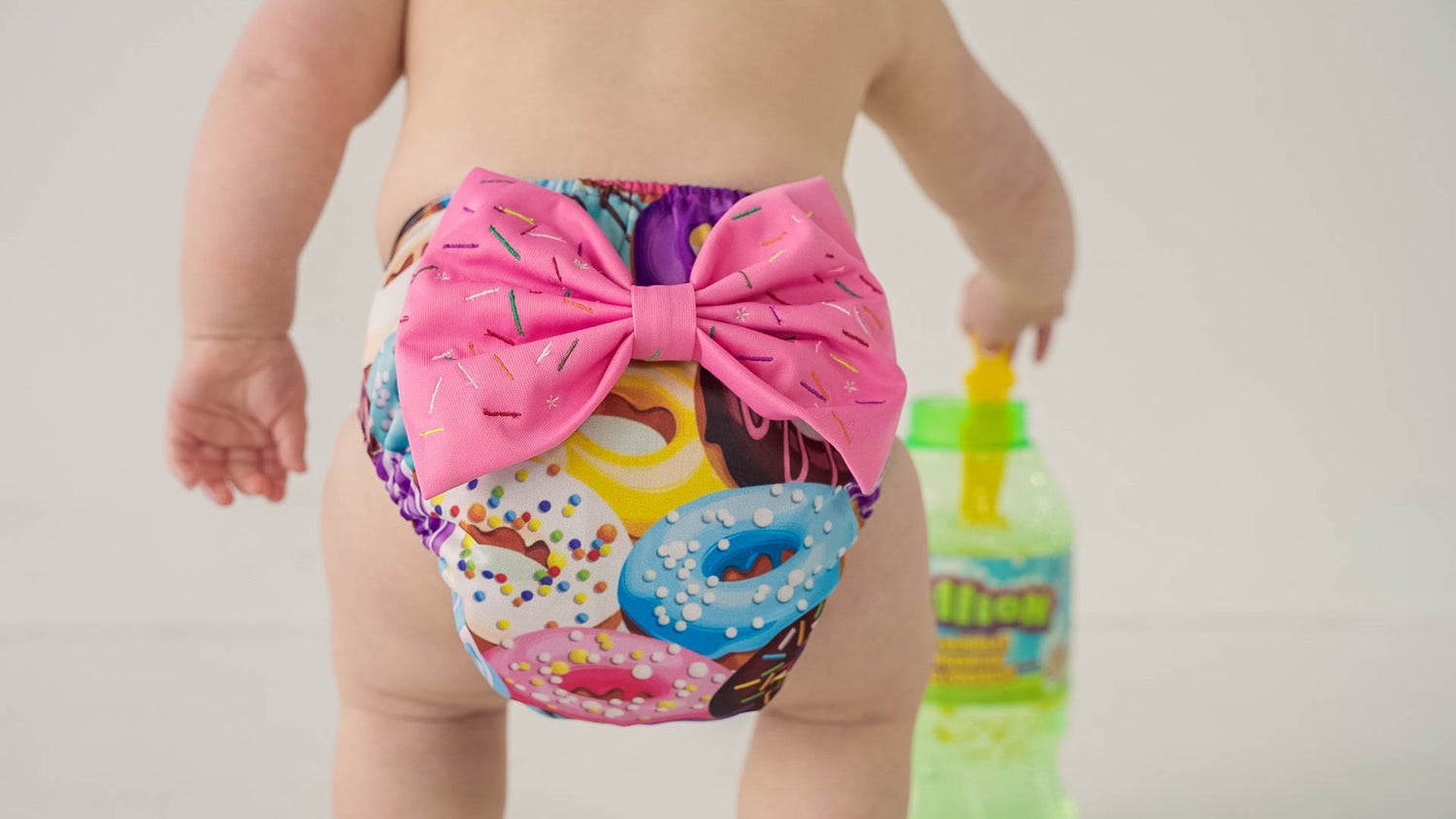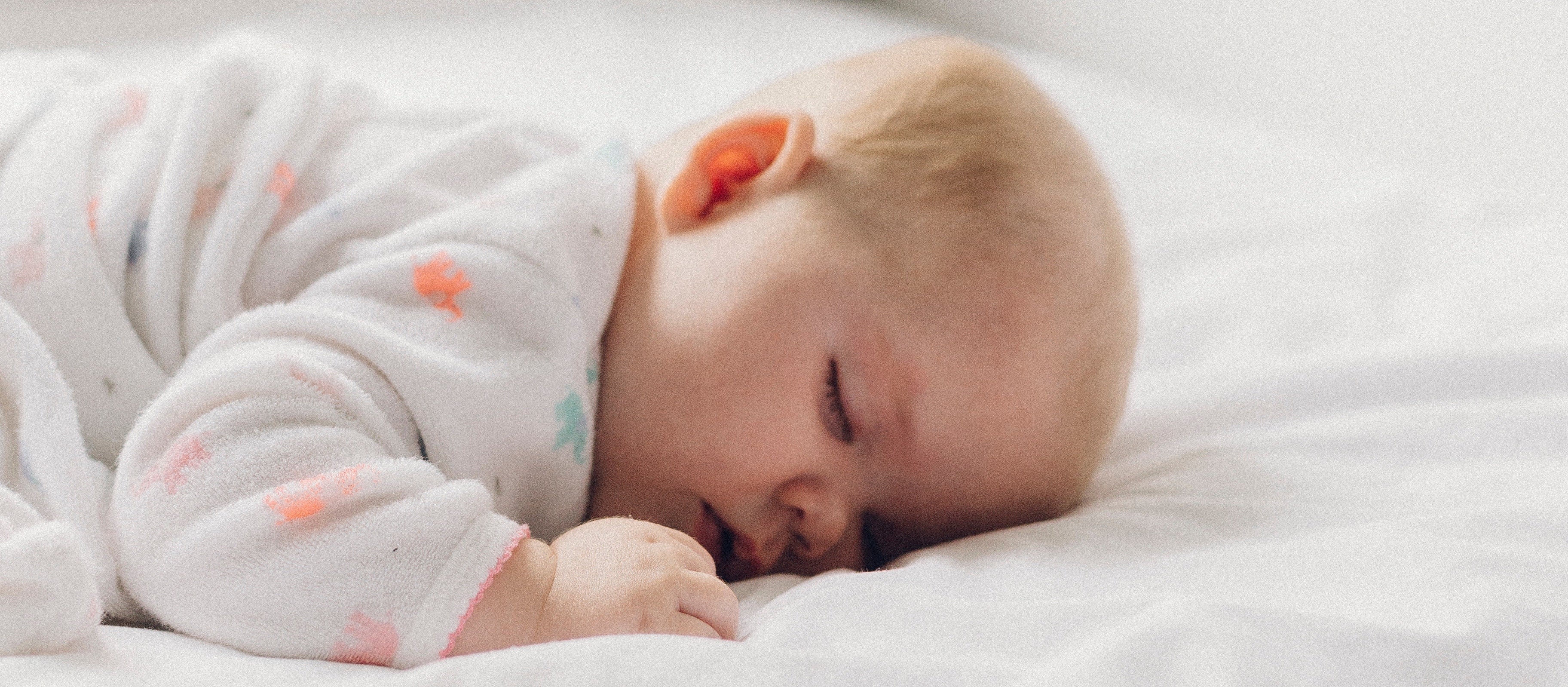Leaks are never fun – especially when your little one can’t seem to make it more than an hour before soaking through their clothes! We try to make cloth diapering as easy and convenient as possible here at Pumpkin’s – so, if your baby is experiencing ongoing, show-stopping leaks, we couldn’t be happier to share a few simple (yet effective) diaper fit tips that should help keep things comfy and dry. These suggestions will not only work to ensure that your baby doesn’t experience any unnecessary rubbing or irritation, but that your little one is wearing the correct diaper size, too. Read on to learn more!
1. Diaper Sits Along the Natural Waist
Cloth diapers are designed to rest slightly lower on the body than disposable diapers. Cloth should sit nicely along babe’s natural waist line – this ensures that we have the correct rise length and also helps to prevent leaks out the top due to the wicking action of the fabric.
My slim/average sized 3-year-old (33 pounds, 37 inches tall) is modelling our L and XL fitted diapers.

2. No Leg Gaps
When a cloth diaper is done up properly (snug, but not pulling fabric in any direction) then we should be getting a secure fit around the leg elastics. If there’s a leak, the leg fit is usually the first thing I’ll check – more often than not, this is where an ill-fitting diaper will start to trickle. Leg elastics should be snug enough to prevent gaps with legs in a froggy M position, but still loose enough to easily slide a finger under

3. Diaper (and Cover) Are Tucked Up Into the ‘Underwear Crease’
Now that we know we’re working with the correct size of diaper, it is time to ensure that the diaper and cover are being tucked up into babe’s groin – or, as we sometimes call it, the underwear crease! The goal is to get the diaper to sit exactly where an older child or adult would wear their underwear. This is best accomplished by lightly pulling on baby’s thigh while you tuck the edge of the diaper/cover up as high as possible into the groin. By having the cover sit as high as possible – and up off the thigh – we can try to prevent any irritation from rubbing as your babe gets older and more mobile!

4. Double-checking That the Cover Contains All the Absorbent Material
A final quick check to be sure that all of the absorbent diaper material is contained inside your water-resistant cover will ensure that your baby’s clothes stay nice and dry!

Additionally, if your one-size cover has rise snaps that are done up, be sure to tuck any extra fabric UPWARDS to help maintain a snug, cozy fit.

Ta-da! Follow these handy tips and baby’s leaky days should be well and truly behind you. Of course, if you’re still having problems even after integrating these steps into your changing routine, don’t feel like you have to face them alone. Instead, give us a call or write us an email at Pumpkin’s Diaper Delivery– we’ll be happy to offer any additional advice we can to help make those pesky, troublesome leaks a thing of the past!





Leave a comment
This site is protected by reCAPTCHA and the Google Privacy Policy and Terms of Service apply.